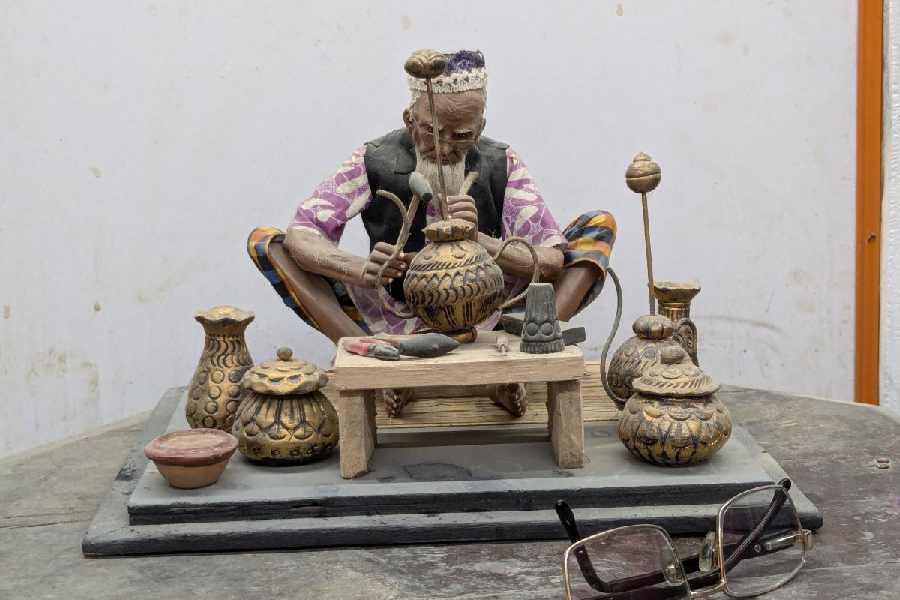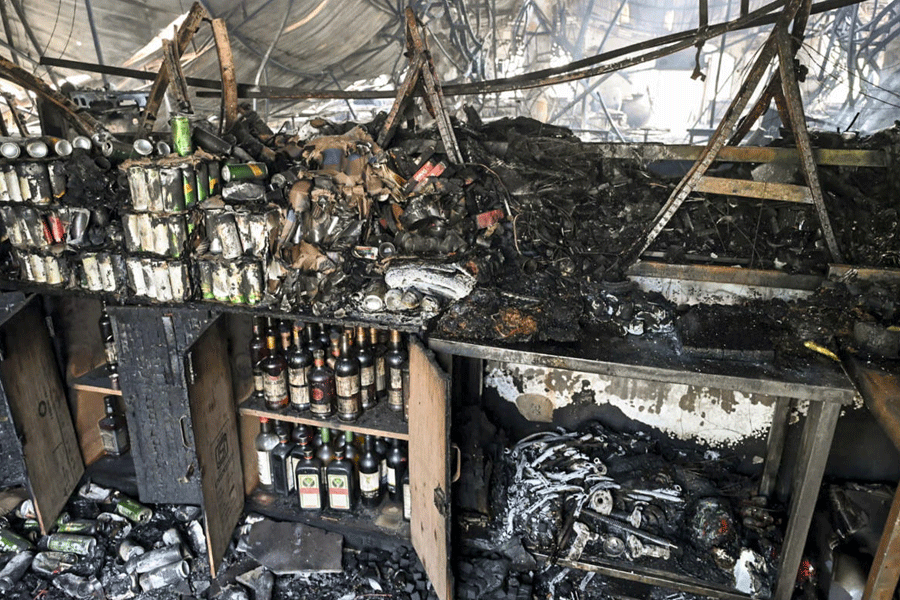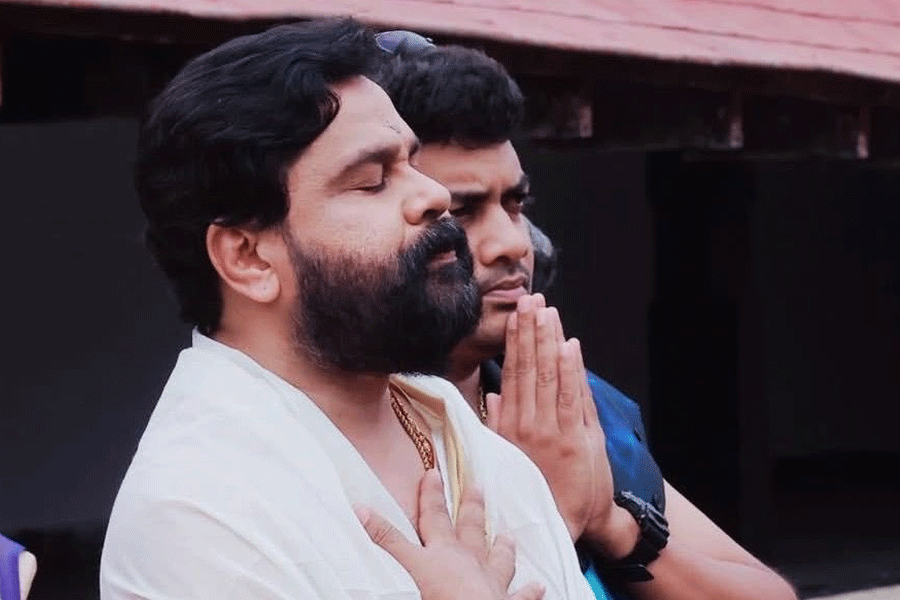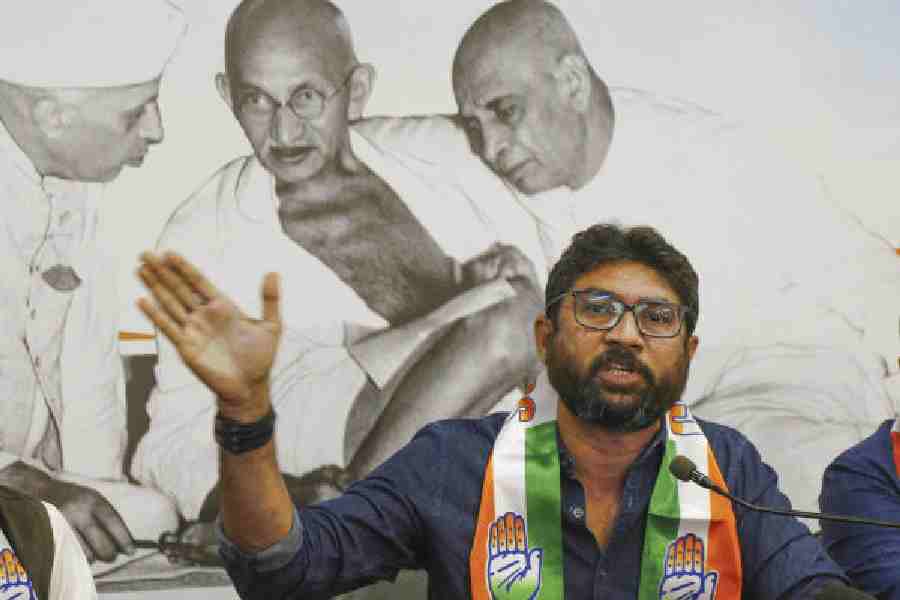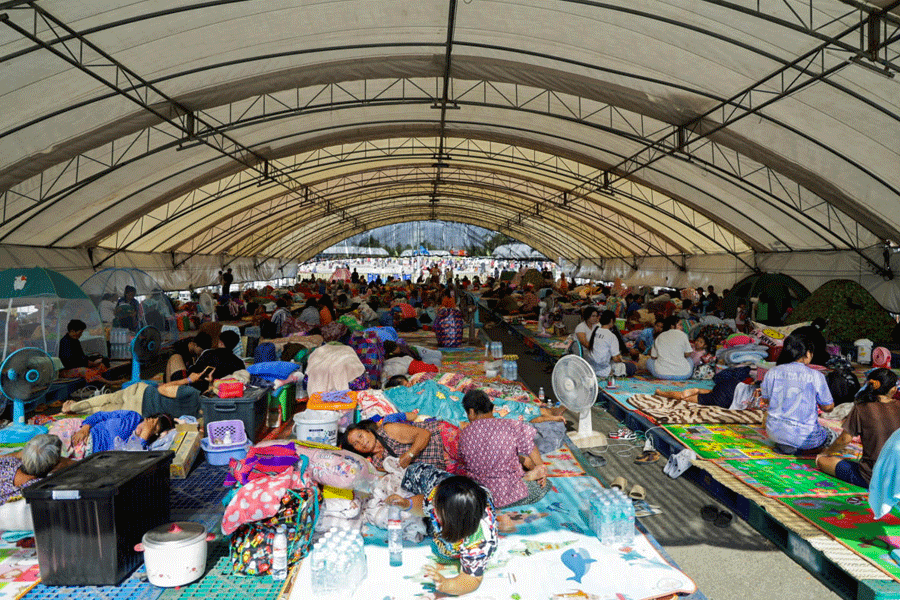A blacksmith at work, the veins on his arms bulging; a beggar seeking alms by the streetside, his cheeks hollow and sunken; a craftsman with a frown and a tool in hand raised in action… Yes, all made of clay. The city of Krishnanagar, 100 kilometres north of Calcutta, has been known for its lifelike figurines since the mid-19th century. So if you believed the magical Geeta Dutt when she sang “Krishnanagar theke ami Krishna kine enechhi” that the place was home to only figurines of Krishna, you would be mistaken.
Subir Paul lives in Krishnanagar’s Ghurni Putulpatty — it is the city’s Kumartuli equivalent — and that is where we meet him. We, as in Subhabrata Maitra, an environmental activist, and myself. Subir won a national award in 1991 for creating a miniature village market. His daughter Saheli, who is also an artist, points to a photograph of the award-winning scene hanging from the studio wall.
“It takes about 15 years to learn the craft of miniatures. And to create one realistic sculpture of about six to nine inches, you need a couple of days of continuous work,” says Subir.
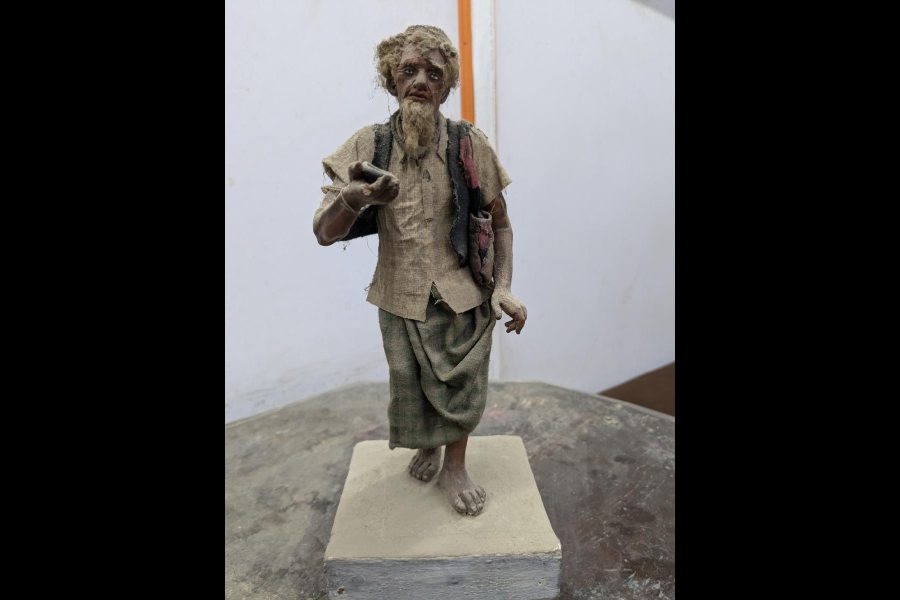
Classic Krishnanagar figurines are made with a special kind of clay. Says Subhabrata, “People here believe that the currents in Jalangi river expertly mix it.” He remembers a time when sculptors and their associates would collect
the clay from the middle of the river.
The special clay is mixed with shimul tula or silk cotton to fashion the finer details. Facial expressions, lines on the face, fingers and muscles are crafted painstakingly. The cracks in the clay are filled with glue extracted from tamarind seeds. The figurines are then dried in the sun and painted over with natural colours. For eyebrows and hair, they use sheep’s wool or jute.
But in the past some years, the Jalangi has become much too emaciated and its special clay is in short supply. Pranab Biswas, who is another sculptor, says, “We have to resort to inferior clay, mix it with sand and chemicals. Some buy China clay from Kutch if they get special orders for miniatures.”
Subir does not make miniatures any longer; there is no demand for them it seems. “The minimum fee for such intensive labour is ₹1,500. Not many are ready to pay that kind of money,” he adds. It makes more sense for new generation artists to create life-sized fibreglass figurines, which sell for anything between ₹10,000 and ₹15,000. He too uses a variety of mediums — stone, fibreglass and metal — to make models of politicians, film stars, cricket players, even deities.
And yet, miniatures are what once defined Krishnanagar’s mritshilpis. A clay model of an indigo factory by Rakhal Chunder Pal of Ghurni from one and a half centuries ago continues to be on display at London’s Royal Botanic Gardens, Kew. On display in these gardens is also a model of a shellac factory from the same period. Its label reads: “Made by Krishnagar modellers, N.C. Paul and Bros (gold medallists)”.
“The sahibs would place orders with my grandfather Naren Pal to craft detailed scenes of the Indian countryside,” says Subir. “They carried these back to England as mementos,” he adds.
Rakhal was preceded by at least three artisans from Krishnanagar whose works were exhibited abroad all those years ago. Among them were Jadu Nath Pal, his brother Ram Pal and his nephew Bakkeswar Pal. Their works were displayed in exhibitions at Glasgow and Amsterdam. In the latter, life-sized models of different tribes of India attracted thousands of visitors.
Collector Soumitra Kar says, “Two centuries ago, the sculptors here used to create clay idols. In time, they started crafting figurines of ordinary people.” Maya Rani Paul, 83, does the same, but today, artisans like her are in the minority. The verandah of her home is full of clay oranges, mangoes, plantains and brinjals. “Most of these are sent to southern India by traders. People there still appreciate our craft,” she says.
“Yes, most of my customers are from Chennai,” says Kamal Krishna Pal while applying the finishing touches to the figure of a phuchkawala. “There they love clay models of coconut sellers, auto drivers, DTP operators...” he adds.
Kamal Krishna’s son has joined his father’s workshop recently; he wants to learn the olden craft. Narottam Pal, 70, is also a happy man; his son Satyajit has joined him in this generational business. Says Satyajit, “Someone should start an art college where senior artists like my father could share know-how about this intricate craft.”
Subhabrata interjects, “There should also be an effort to save Jalangi. After all, it is the crucible of this traditional art.”

